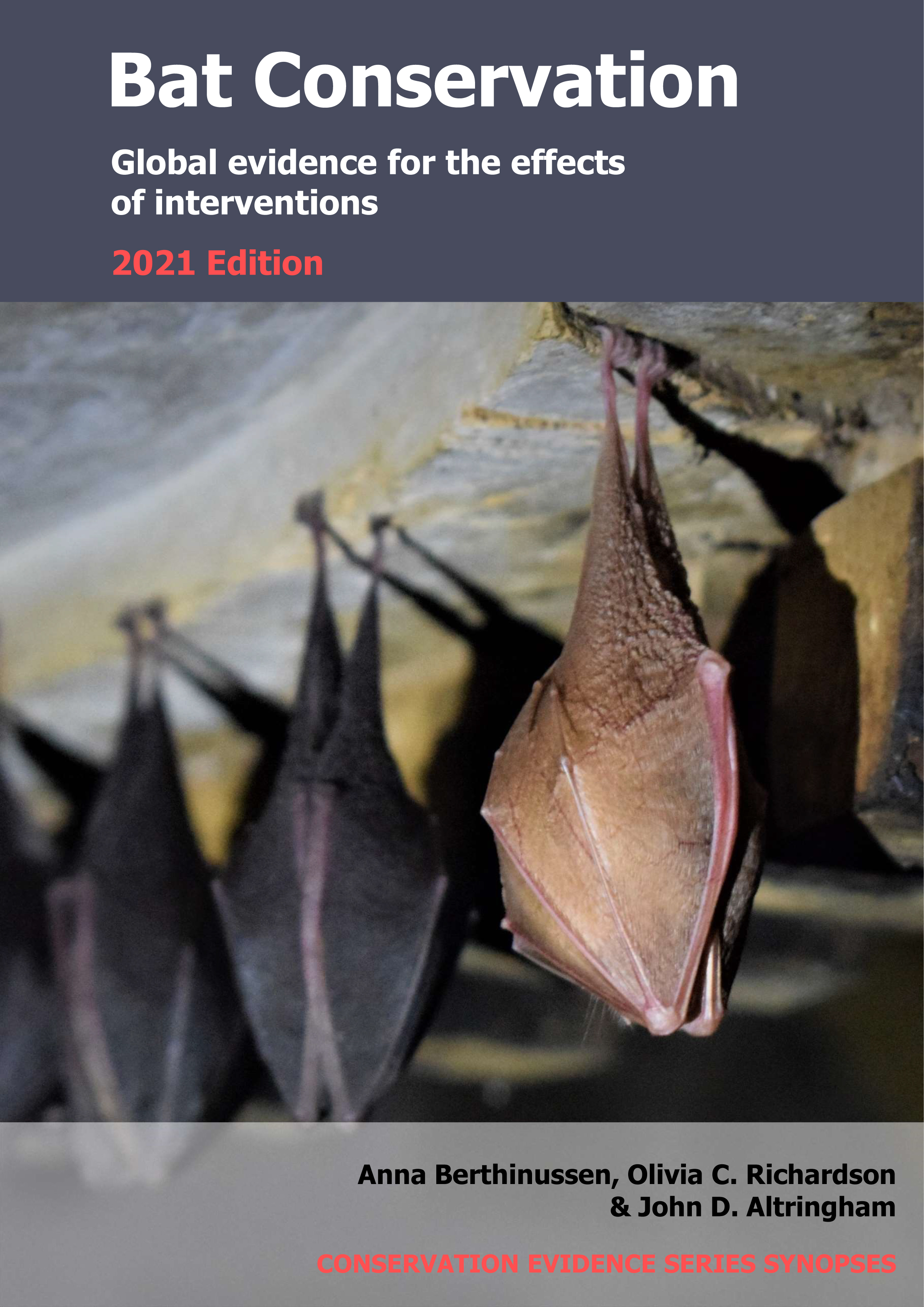Background information and definitions
Remnant forest or woodland fragments may provide important habitat for bats in agricultural landscapes. Remnants of forest or woodland have been found to support greater bat activity and/or more bat species than surrounding pasture, arable land or plantations (e.g. Hobbs et al. 2003, Law et al. 2011, Lentini et al. 2012, Fuentes-Montemayor et al. 2013, Pina et al. 2013). A study in Southeast Asia found that larger forest fragments in areas of plantation agriculture supported similar or higher bat abundance and diversity to undisturbed continuous forest (Struebig et al. 2008).
To be included as evidence for this intervention, studies must have monitored a comparison, i.e. compared remnant forest or woodland that has been kept intact with similar/nearby areas where remnants have been cut down or otherwise degraded. There must have been an active decision (i.e. intervention) to retain the remnant forest or woodlands and the study must state when the intervention was carried out.
For studies that may carry out this intervention alongside other interventions to benefit bats on farmland, see ‘Pay farmers to cover the costs of conservation measures (e.g. agri-environment schemes)’. For a general intervention that involves retaining remnant habitats, see ‘Retain remnant habitat patches’.
Fuentes-Montemayor E., Goulson D., Cavin L., Wallace J.M. & Park K.J. (2013) Fragmented woodlands in agricultural landscapes: The influence of woodland character and landscape context on bats and their insect prey. Agriculture, Ecosystems & Environment, 172, 6–15.
Hobbs R., Catling P.C., Wombey J.C., Clayton M., Atkins L. & Reid A. (2003) Faunal use of bluegum (Eucalyptus globulus) plantations in southwestern Australia. Agroforestry Systems, 58, 195–212.
Law B.S., Chidel M. & Penman T. (2011) Do young eucalypt plantations benefit bats in an intensive agricultural landscape? Wildlife Research, 38, 173–187.
Lentini P.E., Gibbons P., Fischer J., Law B., Hanspach J. & Martin T.G. (2012) Bats in a farming landscape benefit from linear remnants and unimproved pastures. PLoS ONE, 7, e48201.
Pina S.M.S., Meyer C. & Zortéa M. (2013) A comparison of habitat use by bats in natural forest fragments and Eucalyptus plantations in Brazilian Savanna. Chiroptera Neotropical, 19, 14–30
Struebig M.J., Kingston T., Zubaid A., Mohd-Adnan A. & Rossiter S.J. (2008) Conservation value of forest fragments to Palaeotropical bats. Biological Conservation, 141, 2112–2126.






)_2023.JPG)














